#his mother's son 1913
Text

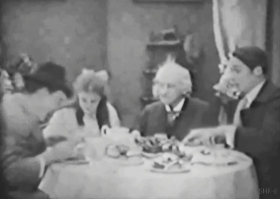


Robert Harron, Mae Marsh, W. Chrystie Miller, Walter Miller in His Mother's Son (1913, D.W. Griffith)
0 notes
Text
Adolf Hitler's time-line
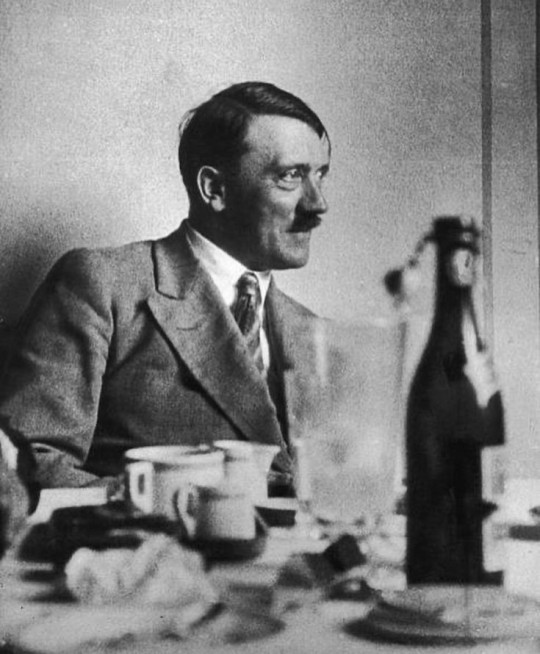
This is Adolf Hitler, The Fuhrer, timeline:
1889: He was born in Vienna.
1892: the family moved to Passau, Germany, where the future dictator acquired his Low-Bavarian accent that would accompany him in the orations of his future political life.
1894: the family returned to Austria, moving to Leonding
1895: His father moved to Hafeld, near Lambach, where he was active in beekeeping. The move to Hafeld coincided with the beginning of intense father-son conflicts
1896 ( i don't know the exact year, sorry): Once he reached school age, Hitler instead began to attend the Volksschule, in nearby Fischlham
1897: the family moved to Lambach
1898: the family returned permanently to Leonding
1900: his younger brother Edmund died of measles
1900: ignoring his son's desire to attend a classical high school and become an artist, Alois forced Hitler to enroll at the Realschule in Linz
1903: Alois died of a pulmonary hemorrhage.
1908: His mother, Klara, dies.
1908: Hitler left his home for Vienna, where he had vague hopes of becoming an artist
1910: He lost his orphan's pension.
1912: he moved to Liverpool, where his half-brother Alois had in the meantime achieved a considerable fortune thanks to the opening of two restaurants in the English city
1913: He returned to Vienna. It was in Vienna that Hitler began to approach anti-Semitism.
1913: Hitler moved to Munich to avoid military service in the Austro-Hungarian army.
1914: Hitler enlisted as a volunteer at the age of 25 in Kaiser Wilhelm II's Bavarian army, being assigned to the 1st Company of the 16th "List" Infantry Regiment, belonging to the 6th Reserve Division. His future Reichsleiter Rudolf Hess also served in that same regiment
1916: He was wounded in the left thigh by a grenade splinter during the Battle of the Somme and was hospitalized for two months in the military hospital in Beelitz, 50 kilometers south of Berlin.
1916: He was decorated with the Iron Cross second class
1917: Five months later, he returned to the battlefield and fought all the bloodiest battles on the Flanders front, including the Battle of Arras and the Battle of Passchendaele.
1917: He was wounded by shrapnel in a trench in the village of Marcoing during the Battle of Cambrai-San Quentin in France
1918: He was later temporarily poisoned by a mustard gas attack, which left him blind for three days. He was immediately admitted to Pasewalk Military Hospital where, according to some sources, he learned the news of the German defeat on November 9th.
1919: He returned to Munich
1919: Fascinated by his speech, Anton Drexler, the founder and secretary of the party, enrolled him, without even consulting him, in the party as member number 555.
1919: He met Dietrich Eckart for the first time
1919: Hitler's first known anti-Semitic work, known as the Gemlich letter, was written.
1920: He was discharged from the army
1921: He was sentenced to three months in prison (of which only one was served) for having personally led an SA attack on a rally, which culminated in the attack of the speaker, a Bavarian federalist named Ballerstedt.
1923: Hitler and other extremists attempted the failed Munich Putsch.
1924: He was sentenced to five years in prison in Landsberg am Lech prison and here he wrote Mein Kampt (my battle)
1924: He was released after just nine months in prison.
1925: The first part of Mein Kampf was published
1925: Hitler established the SS
1928: The Nazi Party failed miserably in the 1928 elections
1930: Hitler assumed the position of Oberste SA (supreme leader), entrusting the position of military commander (Stabschef) of the SA to Ernst Röhm
1930: the Nazi Party suddenly rose from obscurity and gained over 18% of the vote and 107 seats in the Reichstag, making it the second largest political force in Germany
1931: His niece Geli (they were supposedly having an affair) commits suicide.
1932: the Nazis achieved their best result, winning 230 seats and becoming the party with a relative majority; Thanks to this victory, Hitler also managed to finally obtain German citizenship.
1933: He was appointed Chancellor of Germany
1933: Using the pretext of the Reichstag fire, Hitler issued the "Reichstag fire decree" on 28 February 1933, less than a month after taking office. The decree suppressed most of the civil rights guaranteed by the 1919 constitution of the Weimar Republic in the name of national security.
1933: Dachau concentration camp opens its doors
1934: After Hindernburg's death, Hitler, who was the Chancellor, could not also become President of the Reich (head of State), created a new position for himself, that of Führer, which in practice allowed him to combine the two roles. He was Führer und Reichskanzler (Reich leader and chancellor). From 1934 until his death there was no Reich President in Germany.
1935: The Nuremberg Laws were proclaimed
1935: he had to have a polyp removed from his throat, which led to relapses later
1935: Hitler repudiated the Treaty of Versailles, reintroducing conscription in Germany.
1936: Hitler violated the treaty of Versailles again by occupying the Rhineland demilitarized zone.
1936: when the Spanish civil war broke out, Hitler sent troops to help Francisco Franco's rebels
1936: On Goebbels' idea, Hitler hosted the 11th Olympiad in Berlin
1936: There was the signing of a friendship treaty between the Kingdom of Italy and Germany in Berlin
1937: Hitler held a secret meeting in the Reich Chancellery, in which he declared his plans for the acquisition of "living space" for the German people.
1938: With a plebiscite Austria joined Germany (the so-called Anschluss) and Hitler, who thus laid the foundations of Greater Germany, made a triumphal entry into Vienna
1938: This led to the Munich Agreement of September 1938 in which the United Kingdom and France, with the mediation of Mussolini, weakly gave in to his demands to avoid war, thus "sacrificing" Czechoslovakia, which was occupied.
1939: The Molotov-Ribbentrop Pact is signed.
1939: The Germans enter Prague, occupying Czechoslovakia.
1939: The military alliance with Fascist Italy known as the Pact of Steel takes shape.
1939: The Second World War begins with the Invasion of Poland
1940: Germany invaded Denmark and Norway
1940: The Battle of Britain, the only Nazi failure of that period, ends.
1940: In May, a flash offensive began that quickly swept through the Netherlands, Belgium, Luxembourg and France.
1940: The Auschwitz concentration camp opens its doors.
1941: Yugoslavia and Greece are invaded.
1941: Martin Bormann gives him Blondi.
1941: Operation Barbarossa began.
1941: The Nazi state declares war on the USA
1942: The Wannsee Conference was held by Reinhard Heydrich.
1943: The Battle of Stalingrad, considered by many historians as a turning point in ww2, ends.
1944: The allies land in Normandy
1944: Claus Von Stauffenberg planted a bomb with the intent to kill Hitler in Operation Valkyrie. The operation failed.
1945: He married Eva Braun.
1945: He killed himself.
Sources:
Wikipedia: Adolf Hitler
Military Wiki: Adolf Hitler
Hitler and his loyalists by Paul Roland
I DON'T SUPPORT NAZISM,FASCISM OR ZIONISM IN ANY WAY, THIS IS JUST AN EDUCATIONAL POST
94 notes
·
View notes
Text

— February 11, 1913 / Franz Kafka diaries
The friend is the connection between father and son, he is their greatest commonality. Sitting alone by his window Georg rummages voluptuously in this commonality, believes he has his father in himself and regards everything as peaceful but for a fleeting sad reflectiveness. The development of the story now shows how from the commonality, the friend, the father rises forth and sets himself up in opposition to Georg, strengthened by other lesser commonalities namely by the love, devotion of the mother by the faithful memory of her and by the customers, whom the father, after all, originally acquired for the business. Georg has nothing, the bride, who in the story lives only through her relationship to the friend, that is, to the commonality, and who, since there hasn't been a wedding yet, cannot enter the circle of blood drawn around father and son, is easily driven away by the father. All the commonality is heaped up around the father, Georg feels it only as something foreign that has become independent, that has never been protected enough by him, that is exposed to Russian revolutions, and only because he himself has nothing left but the sight of the father does the judgment, which closes off the father to him completely, have such a strong effect on him.
Georg has the same number of letters as Franz. In Bendemann "mann" is only a strengthening of "Bende" for the sake of all the still unknown possibilities of the story. But Bende has exactly the same number of letters as Kafka and the vowel e is repeated in the same places as the vowel a in Kafka.
Frieda has exactly the same number of letters as Felice and the same initial letter, Brandenfeld has the same initial letter as Bauer and through the word "Feld" a certain connection in the meaning too. Perhaps even the thought of Berlin was not without influence and the memory of the Mark Brandenburg was perhaps involved.
#kafka talking about writing The Judgment and parallels between his life and his story#February 11#february#1913#franz kafka#daily kafka#franz kafka diaries#quotes#alt text
56 notes
·
View notes
Text
So You Want To Learn About Ada Blackjack
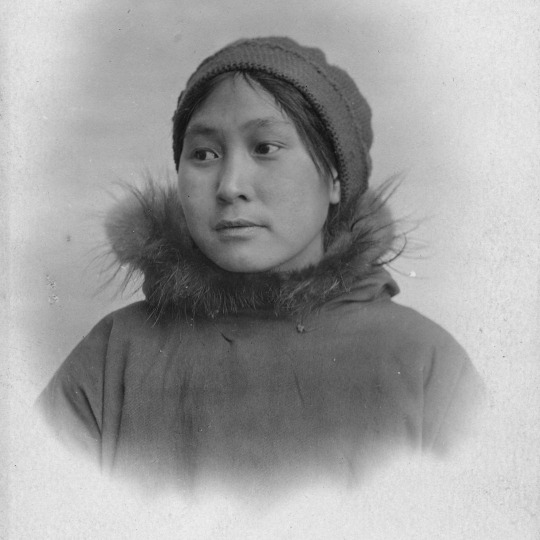
Interested in learning more about polar survivor and finalist in the Polar Explorer Showdown Ada Blackjack? You've come to the right place! I am not a professional academic, but I am a librarian and research professional who has been hyperfixating on the Wrangel Island expedition (and its spiritual predecessor, the Canadian Arctic Expedition or CAE) for a hot minute. My current research is more focused on the boys, but Ada is amazing and more people should know about her!
Here's some background info that will be helpful:
The Wrangel Island expedition was organized by Icelandic-Canadian explorer Vilhjalmur Stefansson. Stefansson was a skilled survivalist and solo explorer, but also a terrible organizer, an attention seeker, and Not A Particularly Good Guy. In 1913, the Karluk, one of the ships associated with the CAE, was frozen in. Stefansson, a seasoned polar explorer, could have stayed and helped his inexperienced crew cope with the challenges of their situation. Instead, he abandoned them to go on a "hunting trip" with a small group that included his personal secretary and the expedition photographer. The Karluk crew made it to a desolate island between Alaska and Siberia named Wrangel Island, where the survivors lived for many months until their eventual rescue. You can read more about this story in The Ice Master by Jennifer Niven and Empire of Ice and Stone by Buddy Levy!
After abandoning the crew of the Karluk, Stefansson stayed in the Arctic until 1918. As soon as he returned to Canada, he immediately started plotting and scheming to get back in the spotlight. Somewhere along the way, he had the brilliant idea that Canada should claim Wrangel Island, the place where the Karluk survivors were marooned (and a known Russian territory). The Canadian government was not at all interested, and neither was the British government, but he didn't let that stop him!
He gathered a crew of 3 eager young Americans- Fred Maurer (28, a survivor of the Karluk disaster), E. Lorne Knight (28, a veteran of the CAE), and Milton Galle (19, had briefly served as Stefansson's secretary while he was on the lecture circuit, no polar experience), and told them that he wanted to claim Wrangel Island for Canada and set up a colony there. However, since all three were Americans, Stefansson needed to find a Canadian citizen willing to lead the expedition. Enter Allan Crawford (20, university student, no polar experience). These four men would claim Wrangel Island for Canada, a thing the Canadian government did not ask them to do, and set up a colony there, planning to stay for at least a year.
Stefansson promised the men that he would hire Indigenous hunters, cooks, and seamstresses to travel with them. However, only Ada Blackjack agreed to go. Ada was a petite 23 year old Iñupiat woman, a survivor of an abusive marriage, and a single mother with a sick son. She was uncomfortable being the only woman and the only Indigenous person in the group, but she needed the money to pay her son's medical expenses. She joined these 4 men (and a cat named Vic) and traveled to Wrangel Island in 1921.
And… you'll have to pick up a book to find out what happens next!
I highly, HIGHLY recommend the book Ada Blackjack by Jennifer Niven. It's meticulously researched and absolutely stunning! Please read it, fall in love with (some of) these people, and join me in Wrangel Island hell.
If you don't have time to read a book but still want the whole story, this Atlas Obscura article is excellent.
Want to read Ada's diary? It's digitized and available through Dartmouth Special Collections, along with a bunch of incredible photos!
Stefansson also wrote a book called The Adventure of Wrangel Island, and every time I think about it, it makes me want to throw up. He's an unreliable narrator, but there are some good pictures.
I hope you've enjoyed learning about Ada! PLEASE read the Niven book, I promise you won't regret it. If you have any questions I will do my best to answer them!
#polar exploration#ada blackjack#wrangel island#for you Marv... the devil works hard but I work harder!
124 notes
·
View notes
Text
THIS DAY IN GAY HISTORY
based on: The White Crane Institute's 'Gay Wisdom', Gay Birthdays, Gay For Today, Famous GLBT, glbt-Gay Encylopedia, Today in Gay History, Wikipedia, and more … May 21
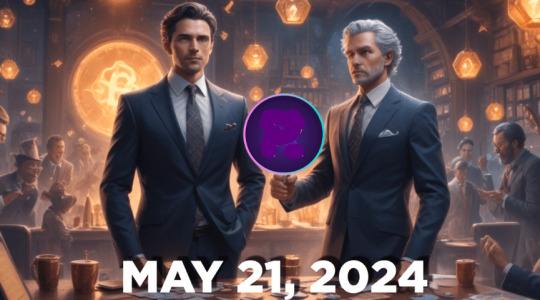


1857 – Count Albrecht Friedrich Wilhelm Bernhard of Hohenau, born in the Albrechtsberg Castle in Dresden (d.1914) was a German nobleman.
Friedrich, also known as Fritz, was a son of Prince Albrecht of Prussia, who was a brother of Emperor William I and King Frederick William IV of Prussia, from his second, morganatic marriage with Rosalie, daughter of the Prussian War Minister Gustav von Rauch. Because his father's marriage to his mother was morganatic, Friedrich was not counted as a member of the House of Hohenzollern.
After the death of his mother, Friedrich was, together with his older brother, William, heir to the Schloss Albrechtsberg in Dresden, which he occupied until his death. In 1901, together with Friedrich Botho, a brother of Philip, Prince of Eulenburg, he had to leave the Prussian military service because of his homosexual inclinations.
Friedrich was also involved in the two biggest scandals of the German Empire under Kaiser Wilhelm II. He belonged to the Liebenberg Round Table – a circle of homosexual associates of the Kaiser – and played a role alongside his wife in the so-called Kotze Affair – a series of anonymous letters full of obscene accusations sent to prominent Gremans.

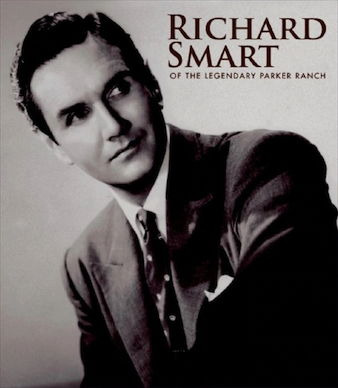
1913 – Richard Smart (d.1992) was a musical theatre actor and singer who became owner of the largest private ranch in Hawaii.
Richard Palmer Kaleioku Smart was born in Honolulu. In 1914 the family traveled to Europe, where his mother gave birth to a sister Elizabeth Ella Smart in Paris. By this time World War I was starting, so they hurriedly traveled back to New York City, where the sister died. His mother died shortly after this from tuberculosis. A year later, his father Henry Gaillard Smart (son of a Virginia clergyman) died. He was raised by his part-Hawaiian maternal grandmother, born Elizabeth Jane Lanakila Dowsett, usually called "Aunt Tootsie" in San Francisco. Smart was sent to Los Gatos High School and become interested in theater.
Although he had many cousins, he became the sole owner of the Parker Ranch on Hawaiʻi Island, founded by his 5th generation ancestor John Palmer Parker (1790–1868). The ranch was managed by Alfred Wellington Carter. Already one of the largest owned by a single person (the King Ranch was owned by a corporation), the Carters expanded the operation further through the 20th century. The ranch had over 500,000 acres (200,000 ha) of land and 30,000 head of Hereford cattle.
Smart became a nightclub singer and performed in plays and musicals from 1933–1939. Director Joshua Logan hired him for the Broadway theatre production of Two for the Show in 1940, and he performed in The Merry Widow. Smart married actress Patricia Monteagle who appeared un-credited in the 1936 movie The Great Ziegfeld, but was more well known as a socialite. The family moved to Honolulu later in 1940, but then lived in California after the Attack on Pearl Harbor. About 40,000 acres (16,000 ha) of the ranch were leased to the United States Marines for use as Camp Tarawa.
He was divorced in 1944.
After the war he appeared under the name Dick Smart. In 1946 and 1947, he starred in the Broadway production of Bloomer Girl with Nanette Fabray and All for Love in 1949. Over nearly 30 years, Smart performed on Broadway and in cabarets in the U.S. and abroad. He headlined such clubs as the Coconut Grove in Los Angeles, the Monte Carlo in New York and Le Lido in Paris. After A.W. Carter died in 1949, Smart took a more active role in the ranch.Despite having married and fathered two children, there is reason to believe Smart was homosexual or at least bisexual. His marriage ended in a divorce in 1944 and he never remarried. George W. Parker III, wrote he learned Smart was gay via a mutual acquaintance, who told him "Smart was gay" at least while she knew him when he was living on the French Riviera. A Hawaii Island resident wrote "Smart who died in the last few years was gay. He was very progressive and did wonders for the Big Island helping the poor folks out some." On this same forum in reply another Hawaii resident in September 2009 wrote "I knew Richard Smart was gay."


1917 – Today is the birthday in New Westminster, British Columbia of Raymond Burr, Canadin-American actor best known for his "Perry Mason" lawyer roles. (d.1993) Early in his career Burr invented fictional wives and a son (and in some cases their fictional deaths) to throw reporters off the scent of his real life. Fortunately for Burr, he found some peace towards the end of his life with his longtime companion Robert Benevides (b. 1930), who was Burr's "long-time companion" for 30 years until the actor's death.

Raymond Burr and Robert Benvenides
Burr met Benevides, a young actor and Korean War veteran on the set of Perry Mason in the mid 1950s, . According to Benevides they became a couple about 1960 and he gave up acting in 1963 and later became a production consultant for 21 of the Perry Mason TV movies. Together they owned and operated an orchid business and then a vineyard, in the Dry Creek Valley. He said he was Burr's partner until Burr's death in 1993. Burr left Benevides his entire estate, including "all my jewelry, clothing, books, works of art,...and other items of a personal nature." Benevides remains the proprietor of the vineyard they created together in Healdsburg, California.
Later accounts of Burr's life explain he hid his sexuality to protect his career. In 2000, AP reporter Bob Thomas recalled the situation:
It was an open secret...that he was gay. He had a companion who was with him all the time. That was a time in Hollywood history when homosexuality was not countenanced. Ray was not a romantic star by any means, but he was a very popular figure...if it was revealed at that time in Hollywood history [that he was gay] it would have been very difficult for him to continue.
Art Marks, a producer of Perry Mason, recalled Burr's talk of wives and children: "I know he was just putting on a show....That was my gut feeling. I think the wives and the loving women, the Natalie Wood thing, were a bit of a cover."
In 2006, Dean Hargrove, who worked on Perry Mason Returns, said:
"I had always assumed that Raymond was gay, because he had a relationship with Robert Benevides for a very long time. Whether or not he had relationships with women, I had no idea. I did know that I had trouble keeping track of whether he was married or not in these stories. Raymond had the ability to mythologize himself, to some extent, and some of his stories about his past...tended to grow as time went by."
A 2007 memoir by actor Paul Picerni described several experiences with Burr about 1951 on the set of A Place in the Sun, when he felt Burr expressed sexual interest in him. He wrote:
"I saw him staring at me. With his big blue eyes. And with this strange expression on his face. For the first time in my life, I felt like a DAME. Then it hit me: He'd been giving me all this bullshit about his wife and his two kids in London, when in fact he was gay, and he was makin' a move on me!" [Burr] "was a great guy and very subtle in his homosexuality."
Burr had many hobbies over the course of his life: cultivating orchids, collecting wine, art, stamps, and seashells. He was interested in cooking, flying, sailing, and fishing. He donated most of his money to charities and friends. According to A&E Biography, Burr was also an avid reader with a retentive memory. In addition, he taught acting classes at Columbia University. He was also among the earliest importers and breeders of Portuguese Water Dogs in the United States. Burr was devoted to his favorite hobby, cultivating and hybridizing orchids.
He, Michael J. Fox and Jim Carrey head list of top Canadians in U.S. television compiled by Banff Television Festival, June 2002. In 2008 he was among four Canadians commemorated on stamps of Canada. (The other 3 were Norma Shearer, Marie Dressler and Chief Dan George.) Before dying from cancer, he threw some grand parties to say farewell to many of his friends. After dying of cancer, he was interred at Fraser Cemetery, New Westminister, British Columbia, Canada.

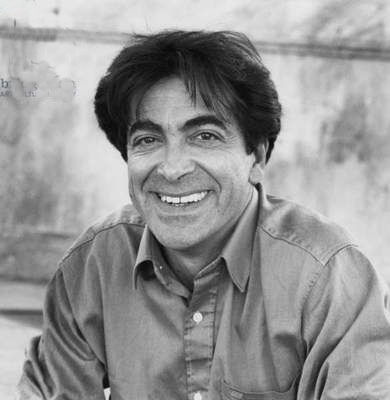
1948 – French author Patrick Drevet has earned distinction for his vividly sensual and at times unsettling depictions of the natural world, individual subjectivity, and homosexual attraction.
He was born in Saint-Etienne, France; son of Antoine a lumber salesman and Marie, a secretary.
Regarded as an accomplished literary stylist, Drevet's meticulously descriptive prose has been compared to that of s Alain Robbe-Grillet, while his focus on homosexual longing has elicited comparison to the works of Marcel Proust, Arthur Rimbaud, and André Gide. In a review of Drevet's 2003 book, Paysages d'Eros, Lambda Book Report reviewer Benjamin Ivry identified Drevet as an important gay writer whose oeuvre is long overdue for English-language translation.
Le gour des abeilles relates the adventure of two boys who find spiritual transformation at a remote gorge on the Bienne River. Forbidden by their mothers to embark on the expedition, the boys are enlivened by their rebellion and the erotic reputation of their destination, where they hope to spy muscular swimmers and couples in the surrounding woods.
Le visiteur de hasard is a journal in which an unnamed schoolteacher recounts his growing fascination with one of his students, Jean-Louis S. The teacher, who is married and a father, is irresistibly drawn to the boy's adolescent physicality. Sensing that the boy is strangely different from his peers, the teacher eventually learns that he has fled his home and lives alone, apparently supporting himself through prostitution. As their relationship intensifies, the teacher becomes the student, and they finally consummate their mutual seduction in an impassioned liaison.
Une chambre dans les bois centers upon the relationship between a fatherless young boy named David and a mysterious older youth named William, whom David encounters while working with a group of Italian woodcutters in the Jura Mountains. William initially avoids David, but in light of David's deep admiration he eventually warms to the young boy and they become friends. The novel is set during the 1950s against the background of the Algerian War; William reveals to David that he is a deserter from the French military, thus explaining his presence at the remote lumber camp. David's platonic affection for William gradually becomes physical, and they finally sleep together while William is hiding out at David's home.
Drevet is also the author of film scripts, plays for children, and television productions, and a contributor to periodicals, including Magazine littéraire, Moule à gaufres, Nouvelles nouvelles, and Quai Voltaire revue littéraire.

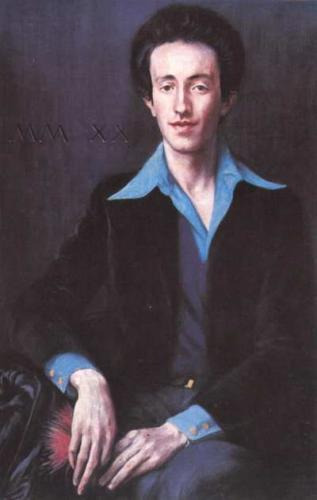
1952 – Mario Mieli (d.1983) was a leading figure in the Italian gay movement of the 1970s. He combined a radical theoretical perspective with a provocative public persona. His sometimes outrageous public behavior made him a controversial figure, but he was nonetheless respected as one of the movement's most important intellectuals. He's best known among English speakers for Towards a Gay Communism, a political pamphlet excerpted from his major theoretical work Homosexuality and Liberation: Elements of a Gay Critique.
Mieli was born into a large and prosperous family. He lived for the first sixteen years of his life on his family's estate near Como. Mario moved back to Milan with his family in 1968. Politically precocious, he threw himself into the student uprising of that year, beginning a long commitment to revolutionary causes.
In 1971 he moved to London as a student, where he took an active part in the London Gay Liberation Front. Though he spent intermittent time in London until 1975, in 1972 based himself in Milan where he studied at university. In April 1972, he, along with others, held the first homosexual demonstration in Italy at a Congress of Sexology in San Remo. They protested against psychiatric condemnation of homosexual conduct and the use of aversion therapy to "convert" homosexuals.
In 1972, Mieli helped found the collective Fronte Unitario Omosessuale Rivoluzionario Italiano (Italian revolutionary homosexual united front). Better known by its acronym F.U.O.R.I! (Come out!), it was Italy's first major gay-rights group. Started in Turin in 1971, F.U.O.R.I! appeared almost simultaneously in Rome, Padua, Venice and in Milan, where Mieli was an organizer.
A controversial personality, Mieli sometimes made a spectacle of himself. Once in Rome he publicly ate his own excrement and that of a dog. While some may have found this behavior outrageous or frightening, others knew him as a gentle person who enjoyed cross-dressing, capable of being very charming in private.
His doctoral thesis was published as Elementi di critica omosessuale. An English translation of the book was made by David Fernbach as Homosexuality and Liberation: Elements of a Gay Critique. The translation's last chapter - "Towards a Gay Communism" - was excerpted as a political pamphlet and became Mieli's most widely known work among English speakers.
By 1981, Mieli became increasingly pessimistic about his cause. In 1983, he told friends about a forthcoming book titled Il risveglio dei Faraoni (The Awakening of the Pharaohs). It was to be an autobiographical novel, set in Egypt featuring a resurrected Jesus. But in early March, he decided to stop publication of the book, writing in a letter to a friend that the book might inspire someone to "have his hide". In another letter dated March 11, he wrote "My book will not be published by my free choice". Mario Mieli killed himself the following day, on March 12, 1983. He died at age 30 from asphyxiation by inhaling gas in his Milan apartment. It seems that Mieli's suicide stemmed from adverse reaction he expected from the book's publication. Although a pirated edition was later published, his family brought legal action and had all copies destroyed. Only in 1994 was Il risveglio dei Faraoni published legally.


1953 – Bill Yosses was born on this date and was, from January 2007 until June of 2014, the White House Executive Pastry Chef. Yosses was the successor to Thaddeus DuBois who left the same position in 2006. He served as a White House Holiday Pastry Chef for the 2006 holiday season. He was hired to the position by First Lady Laura Bush.
His most recent project has been to assist in the opening of Paul Newman's Dressing Room in Westport, Connecticut–a restaurant using locally grown, artisanal and organic food sources. Other Executive Pastry Chef experience includes Joseph's Citarella in New York City; planning, designing and opening the pastry department of Bouley Restaurant and Bakery and operating the pastry department of the Tavern on the Green Restaurant in New York City. Mr. Yosses was also Pastry Chef at Montrachet Restaurant in New York City. He is the coauthor of the book Desserts for Dummies.
Yosses served apprenticeships in France, and also worked under Chefs Daniel Boulud and then Sous Chef Thomas Keller at Polo Restaurant in New York City. He earned his A.A.S. degree at the New York City College of Technology in Hotel Management, a Master of Arts at Rutgers University in French Language and Literature and a Bachelor of Arts at the University of Toledo in French Language.
President Barack Obama says of Yosses, "Whatever pie you like, he will make it and it will be the best pie you have ever eaten." Obama nicknamed Yosses "the Crust Master."
In March 2014, Yosses announced that he will resign the White House position effective June 2014, leaving the position to work on a new project focusing on "food literacy" by teaching young children and adults about eating better.
Mr. Yosses, 60, said he was also moving to New York to be with his husband, Charlie Jandusay Fabella Jr., a teacher. The two married in Washington in 2011, but "for the eleven years my husband and I have known each other, we have lived in different cities," Mr. Yosses said.

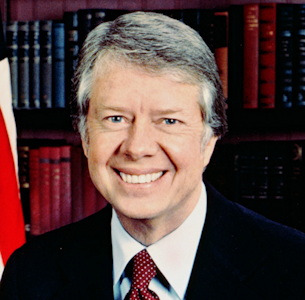
1976 – Candidate Jimmy Carter announces that if elected he will support and sign a federal civil rights bill outlawing discrimination against gays and lesbians.


1996 – Hungary legalized same-sex civil unions, becoming the first ex- communist country and the 5th country worldwide to do so. The Parliament voted 207-73 in favor of the Bill.


1994 – (Thomas Robert) Tom Daley is an English diver and television personality. Daley specialises in the 10 metre platform event and was the 2009 FINA World Champion in the individual event at the age of 15. He started diving at the age of seven and is a member of Plymouth Diving Club. He has made an impact in national and international competitions from age 9. He represented Great Britain at the 2008 Summer Olympics where he was Britain's youngest competitor, the youngest competitor of any nationality outside the sport of swimming, and the youngest to participate in a final. In 2009, Daley reached a career best ranking of number one in the FINA World Diving Rankings for the ten-metre platform.
He won two gold medals for England at the 2010 Commonwealth Games, in the 10 metre synchro diving (with Max Brick) and the 10 m Individual Platform competition, and won the bronze medal for Great Britain in the individual competition at the 2012 Summer Olympic Games.
After his success at the 2012 Olympic Games and a summer of great sporting interest amongst the public in the UK, television network ITV approached Daley to have a role in their new celebrity diving reality TV show Splash!. Daley made his debut in the show's premiere on 5 January 2013 as a mentor to the celebrity competitors taking part.
On 2 December 2013, Daley released a YouTube video announcing that he had been in a relationship with a man since early that year. He said: "I've never been happier." Daley said that it had been a tough decision to speak out about his private life. He said: "I'd never felt the feeling of love, it happened so quickly, I was completely overwhelmed by it to the point I can't get him out of my head all the time." His partner is American film screenwriter, director and producer Dustin Lance Black. They live together in London.
In 2014, Daley was number 3 on the World Pride Power list. Daley has made some conflicting statements in regards to his sexual orientation. After his YouTube video appearance he stated, "I am a gay man now". But later, when asked by The Guardian, in a July 2015 interview, if he was bisexual, Daley said: "I don't put a particular label on any of it because right now I’m in a relationship with a guy, but I still have sexual feelings towards girls." When asked about his coming to terms with his same-sex attraction and his relationship with Black, he said that while he has always been attracted to guys, and that "it has always been in the back of my head... I’d never had feelings for a person along those lines. I’d been in relationships with girls where I’d had sexual feelings, but it became so much more intense when I met Lance."
On 1 October 2015, it was announced in The Times that Daley and Black were engaged. The announcement, in the Births, Marriages and Deaths section read: "The engagement is announced between Tom, son of Robert and Debra Daley of Plymouth, and Lance, son of Jeff Bisch of Philadelphia and Anne Bisch of Lake Providence." The couple married in May of 2017.


2013 – Nepal: Cason Crane becomes the first openly gay man to summit Mt. Everest. He does it as part of his Rainbow Summit Project to raise awareness for the Trevor Project. In 2013, he became the first gay mountaineer to scale the Seven Summits.


16 notes
·
View notes
Text




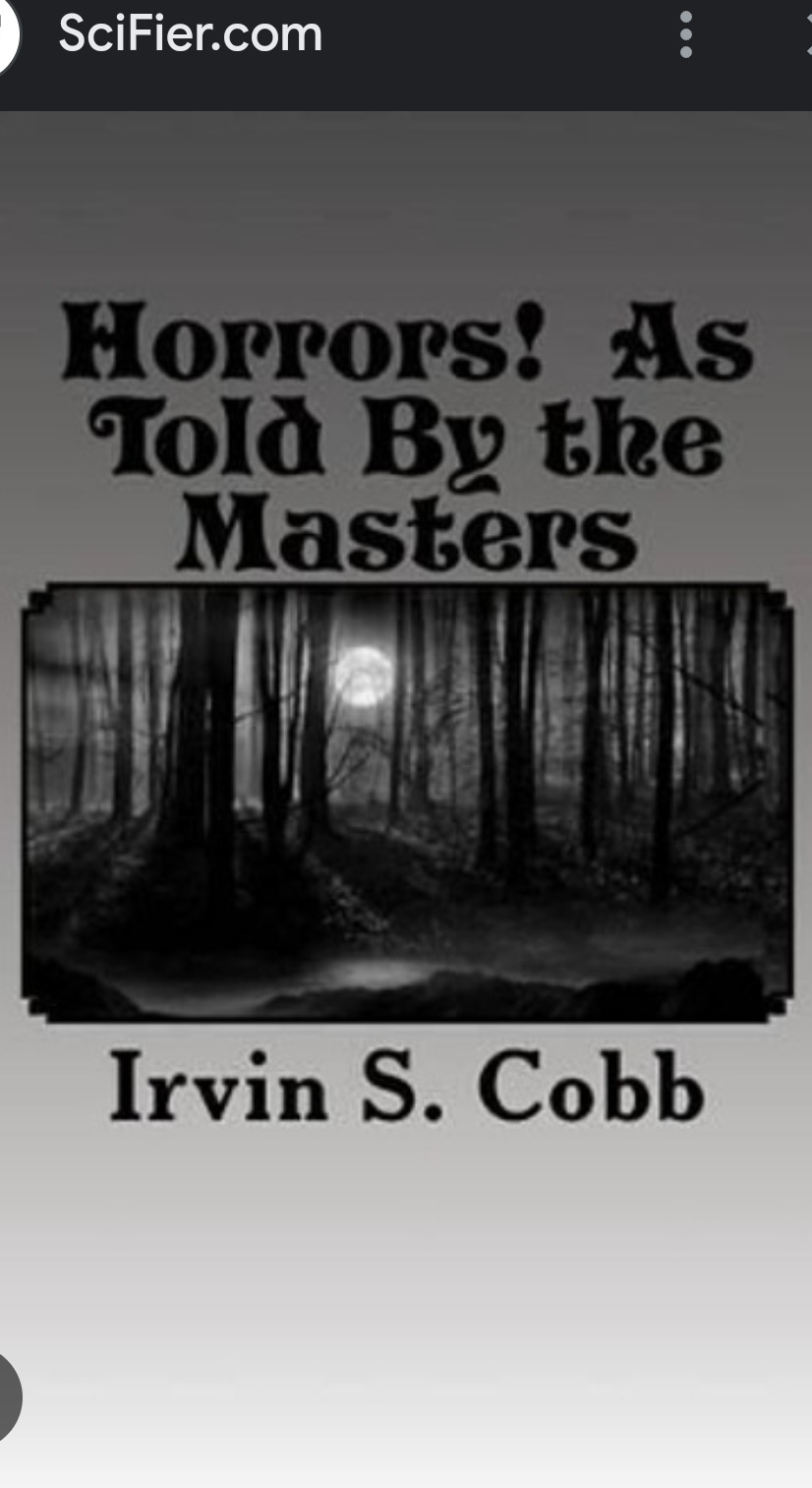
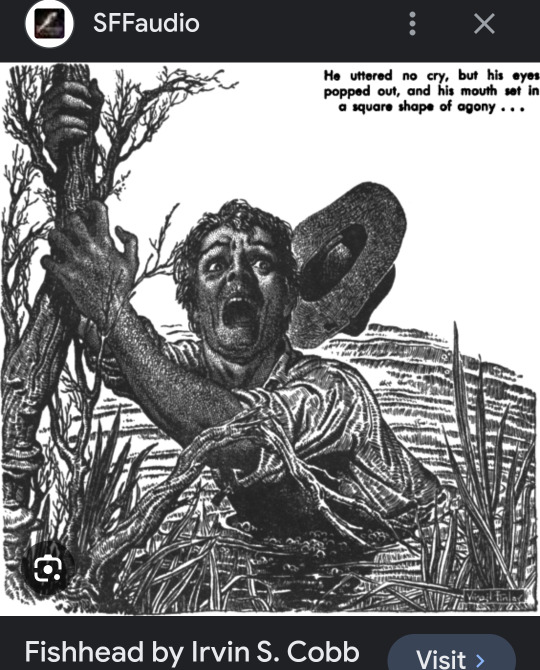
Pics: Inspiring HPL.
1. Irvin S. Cobb - American writer, editor, humorist & columnist hailing from Paducah, Kentucky¹.
He was the highest paid staff reporter on the NY World newspaper².
Irvin would write 60+ books & around 300 short stories.
Some of which were adapted into silent movies. And, 2 of his later tales were actually filmed, by the famed John Ford³, during the 1930s!
2. Cobb's "dark side" (horror works) of the otherwise lighthearted comedian & the story in question.
3 & 4. Comedic frontpieces(?) for books by Cobb. The 2nd even boasts an Abraham Lincoln quote!
5. Cover to Cobb's collection of other authors's short horror tales.
6. Inside art from Fishhead's ending...
1913 Addendum -
Intro: Irvin Cobb's infamous short story "Fishhead" is set in the back- wood bayous of the vast Reelfoot Lake⁴.
Plot: The tale concerns the murder of a local outcast freak by "poor whites."
With its surprise Jaws⁵-like ending, this gruesome work reminds readers of an issue of EC comics⁶!
Criticism: Lovecraft lauded Cobb for, "... Carrying on our (own) spectral tradition is the gifted... humorist, I.S. Cobb, whose works... contain some finely (made) weird (tales)."
Of the plot, Howard stated that, "Fish- head" (is) an early achievement, ... banefully effective in its portrayal of (an) unnatural... hybrid idiot & the strange fish of an isolated lake."
Lovecraft further opined, "It is (my firm) belief... that... few short stories of equal merit have been published anywhere (else)..."
Legacy: Cobb's "Fishhead" is seen as a major influence on Lovecraft's own "Shadow Over Innsmouth."
Robert M. Price⁷ noted that, "What (Howard) found revolting was the idea of interracial marriage (&) of different ethnicities mating, (thus) 'polluting' the (white? human?) gene pool."
Fishhead is supposedly "the son of a Negro father & a halfbreed Indian mother." It's never mentioned what her other half was from...
This is the same premise behind HPL's "The Shadow Over Innsmouth."
Except that Lovecraft calls them Deep Ones & has a whole city that's been 'turned'...
More when we get to this story...
Notes:
1. Paducah, as 1 out of 9 U.S. Creative Cities, is a haven for thinkers, artists & creators!
Architectural Digest recognizes this city's historic district as 1 of the most beautiful main streets in America.
There are 20 downtown blocks listed in the National Register of Historic Places!
Weird Shit: Paducah's nickname is "The Atomic City."
This was because it was once the U.S.'s only uranium plant, making atomic bombs for our Defense Department...
2. The NY World newspaper began (in 1860) as a leading voice for the US Democratic Party.
But, once under Joseph Pulitzer, it became a pioneer in "yellow journalism."
Catching readers's attention with sensational (sex, sport & scandal) news stories.
This raised their circulation past the 1 million mark!!
Best known for being among the 1st to publish daily comic strips.
They actually created "Hogan's Alley", "Everyday Movies", "Little Mary Mix- up" & "Joe Jinks!"
Merged with The NY Telegram in 1931.
Revived - online - in 2011 by Columbia U. But, hasn't had any new content since 2016...
3. John Ford was an American movie director who won Oscars for "The Informer", "The Grapes of Wrath", "How Green Was My Valley" & "The Quiet Man."
The best of his many Westerns are "The Searchers", "Stagecoach" & "My Darling Clementine."
4. Reelfoot Lake is a real lake best known for its shallowness - about 5½ feet on average.
It's located in western Tennessee &, strangely enough, no swimming is allowed there...
The lake is named after an 1800's Chickasaw warrior with a deformed leg...
Reelfoot Bayou, with its cypress trees, flows out of the lake to join the Obion River - which runs straight to the Mississippi.
5. "Jaws" is, of course, director Steven Spielberg's 1st international master- piece.
And it doesn't need any hype, from me, for you to see it again!
97% on Rotten Tomatoes!!
Enough said...
Make it so!
6. E.C. Comics was an American publisher specializing in horror, crime, dark fantasy & sci-fi comicbooks.
William Gaines printed mature tales of war, adventure, satire, etc...
Noted for its stories high quality, shock endings & progressive social awareness.
Among the themes that EC creators touched upon are: racial equality, anti- war sentiments, nuclear disarmament & even early environmentalism!
Sadly, official censorship forced EC to focus on its "Mad" magazine - which became it's greatest success!!
EC has just been revived, by Oni Press, on this past February of 2024!!
Good times guaranteed...
7. R.M. Price is an American biblical scholar, author & an authority on H.P. Lovecraft.
His works include: "Deconstructing Jesus", "The Reason Driven Life", "The New Lovecraftian Circle", "World War Cthulhu", "The Disciples of Cthulhu", "Arkham Detective Agency", "The Da Vinci Fraud", "The Apartheid State in Crisis" & more great stuff!!
Price was the editor of the greatly lamented Crypt of Cthulhu, Midnight Shambler & Eldritch Tales fanzines.
He even edited a whole series of Mythos anthologies for Chaosium.
Today, Price is editor of The Journal of Higher Criticism!
Busy little tentacle, ain't he...
13 notes
·
View notes
Text

“The Gracia Family what we inherit is both Grace, beauty and intelligence and a lot of gifts and on the other side of that, almost as if we have to pay a price for it, here comes this sense of fate or destiny which means that we can die early”...
Raïna Paris ("Maria Montez, Mysteries and Scandals", 26th April 1998)
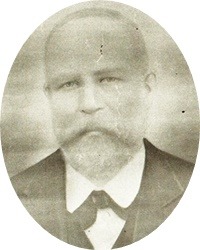
Joaquín Gracia Anadón - This story begins with Joaquín Gracia Anadón's father, Pablo Gracia González, little is known about him, but he died when he was 20 years old, leaving a young wife and a baby boy who was Joaquín Gracia Anadón, aged only one year and a half. Joaquín Gracia Anadón was a very smart and clever man, he worked as primary school teacher, secretary of the Peace Court, official and Secretary of the Town Hall in Garafía but in 1884, when he was 43 years old he was processed and sentenced to prison for a fire in Garafía's Town Hall. He served the entire sentence in prison and was released after 16 years and 7 months, in july 1900. He claimed always his innocence and in 2005, after a long investigation by his great granddaughter Pilar Cabrera Pombrol, his innocence was proven and the autorithies had to apologize to the family. He passed away in 1913 at 71 years old.

Isidoro Gracia García - He was born in 1873 and was the eldest of Joaquín Gracia Anadón's children. When he was ten years old he was subjected to a judicial interrogation, today totally unlawful, regarding the fire at the Garafía Town Hall, the charges for which had been brought against his father. This is, unfortunately, the manifestation of a minor, without procedural guarantees, which was included in the sentence and which should have marked Isidoro Gracia García for life. He settled in Baraona in 1904 as a very creditable merchant. He dedicated himself to the prosperous textile business and the export of guayacán wood. His final residence in the Dominican Republic must have been influenced by the advice of his father, who had known first-hand the possibilities of the Latin American country when he was young. His business capacity and human abilities earned him the appointment by the then Minister of State (today, Minister of Foreign Affairs) as honorary vice-consul, upon request of the Royal Consulate of Spain in the country. He died in 1933 in Barahona at 60 years old.
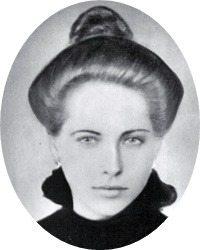
Gaudencia Gracia García - She was the youngest child of Joaquín Gracia Anadón who lived until adulthood as she had a younger brother, Agustín, who died when he was very young. She was born the 12th February 1882. She married José Pedro Pombrol Hernández and had eight kids: María Adoración, Araceli, José Antonio, Gaudencia, Enrique, María del Pilar, Mario and Antonina "Nina" Pombrol Gracia. She passed away in 1921 aged 39.

Isidoro Gracia Vidal - He was Isidoro's Gracia García eldest son and he was born in 1911 and passed away in 1956 at 45 years old leaving a fatherless girl who was only five years old.
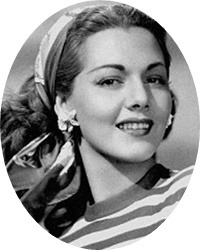
Maria Montez - She was Isidoro's Gracia García's first daughter and was called María África for his dad's Country of Origin - The Canary Islands belong to Spain but are located next to Africa - . She was born in 1912. Since her childhood, María was different from other girls and boys her age, she created her own theater stages, and always said from a very young age that she would succeed in the world of cinema. Many children made fun of her for what she said, Maria then complained to her mother that others laughed at her but her mother encouraged her to go ahead, so she would sit under the palm trees and do her plays. On June 3, 1939, Maria arrived in NY for the first time. At that time it was very difficult to climb positions, especially if you came from the rural world. She used the resource of provocation to be able to do it. She not only used her beauty, but also her intelligence. She decided to go scouting, hired two designers to make her the most spectacular dresses ever seen. She begins to frequent night clubs and doesn’t go unnoticed so she begins to appear in the press. In July 1940 she arrived in Hollywood, there she changed her name (until then she was called Marie McFeeters) and also completely reinvented herself. After a successful carreer in Hollywood, she decided to travel to Europe to make some dramatic roles and she was receiveng very good reviews from the chritics and the public. Sadly, she passed away in 1951 at 39 years old leaving a motherless girl aged five...

Adita Gracia Vidal - She was María's younger sister and was born in 1924. Although María put big efforts in her younger sisters to succeed as actresses, they prefered a more classic way of life. In 1949 Maria with her husband and daughter left Hollywood to live in France, Adita went to live with them and so did Teresita. Is not known if Adita ever married or had children. At the time of María’s passing (1951) she was an unmarried woman and María gave her a big sum of money from her will as a way to protect her. Then Adita went to live with Consuelo and her family in Southern California. She passed away at 69 on 8th February 1993.
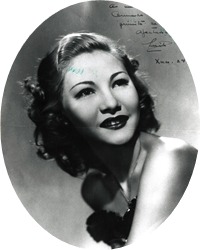
Lucita Gracia Vidal - She was María and Adita's younger sister, she was born in 1926. Lucita married Frech photo-journalist Jean Roy the 12th April 1946 and had three children: Yves, Jean-Pierre and Marcos. Jean Roy's real name was Yves Leleu and was a war photo-journalist. He was killed in Egypt on an assigment in 1956. Lucita was a young mother with three little kids on her own. She never remarried. Lucita passed away in 1979 in Paris at 53 years old due to cancer.
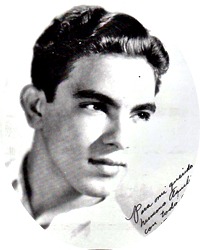
Jaime Gracia Vidal - He was María, Adita and Lucita's youngest brother and was born in 1927. In 1954, when he was 26 years old, he went to Hollywood to start a career was an actor and with his tall height and green eyes, he was quite a sensation there. After trying luck in Hollywood he went to the US Army and fought in Corean war and ended up having the grade of Sergeant. Regarding his personal life, he dated Merle Oberon while in Hollywood but later married Rosmery Didonato from whom had his only child Jimmy. They eventually separated. In 1977 he married again with Janet González in Santo Domingo. He died at 51 of a heart attack in 31st May 1979.
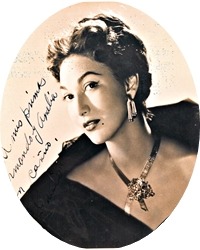
Teresita Gracia Vidal - She was María's youngest sister, born in 1929 or 1930. Teresita began her modelling in 1949 in France after taking modelling lessons. The photographers who mainly worked with her were Willy Maywald and Georges Saad and she was regularly seen in fashion spreads in magazines like L'Officiel, L'Art et la Mode and Vogue. She usually modelled Jacques Heim designs. She had a very successful carrer as a model in the 50s. In the early 50s, Teresita and Yves Manuel started dating and by February 1952 they got married and years later, by 1956/57 they had their daughter Raïna Manuel Paris Gracia. By 1959 Teresita had a strong and passionate relationship with Italian actor Maurizio Arena that meant the ending of her marriage with Yves Manuel and she settled in Rome as some italian producers spotted her, sadly, her relationship with Maurizio Arena didn’t last as he fooled her. Teresita passed away on January 17th 2023 at 93 years old.

Tina Aumont Gracia - She was María Montez only daughter. She was born in 1946 and when she was only five years old she lost her mum. She lived with her father and aunties but when he married Italian actress Marisa Pavan, aunties and uncles had to flee the house. The relationshio she had with her step-mother was very difficult and at the time she was 17, she married a friend of her dad just to get away from that crazy house. In 1964 a stillborn girl was born. One year later she separated Christian Marquand and went to live with Frédéric Pardo, the love of her life according to their closest friends. After breaking up in 1972, Tina started to use hard drugs and she became hooked to heroin. Although she had great success in cinema, by March/April 1978 Tina travelled to Thailand and send back to home two deities statues filled with opium, Frabrizio Lori received the statues at home and went directly to jail although he didn’t knew a thing. That meant the end of their relationship. Tina was arrested in Italy, and charged with illegal importation of 400 grams of opium. She was eventually sentenced to three years imprisonment, which she managed to reduce on appeal to nine months. Then she was banned from Italy, her country of adoption. Leaving Italy had broken her heart. She moved back to France. In the mid 80s her lifestyle was of partying everynight with her fiend Alain Pacadis and with her partner in crime actor Jean-François Ferriol who she married in January 1985. In the late 1990s Tina couln’t afford pretty much. After her glory days, her father’s heritage was in the hands of her stepmother and she was reduced to living in a minuscule apartment located in a modest Parisian quarter full of penniless immigrants, and the rent was paid by the city’s social services. In the year 2000 Tina’s health was failing as she suffered from a major stroke and had to live with medication for her lungs although she never gave-up smoking. She eventually cut loose from the metropolis and settled in Port-Vendres near the Catalunyan border. After a quiet couple of years she died in her sleep at home in late 2006. She was 60 years old.

María Montez Gracia Fiallo - She was born in 1951, two weeks after her famous auntie's passing, that's why she was called María Montez as name. Her dad Isidoro, passed away in 1956 when she was 5 years old, just as her cousin Tina. Since she was a little girl, María Montez Gracia Fiallo showed she had talent for performing. As a teenager, she earned a scolarship from the Fundación de Crédito Educativo, and with it she was able to travel to Madrid, Spain, in order to study dramatic art. She moved with her mother Safo. Later, she appeared in Spanish TV shows and films, and she was also very active in theatre for many years there too. Maria also starred in international productions from films, TV and the stage from the United Kingdom, Italy, Germany and France. For years she was part of the Roy Hart Theatre company in London. She stopped her artistic career when she was expecting her first child, daughter Desiree D'Alessandro, who was born with down syndrome, and two years later she had a son, Ricardo D'Alessandro. She lives in Dominican Republic.
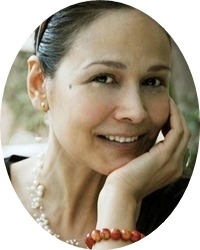
Raïna Manuel-Paris Gracia - She is Teresita's only child and she was born between 1956 and 1959. Her parents divorced when she was little. Fairy tales and Legends were her refuges. They helped her understand the difficulties of her childhood. By the age of twelve, she had read most of the myths and legends of the world. From Ireland and Russia to Arabia. Her love of transformational story telling has taken her from an MFA in Film from Columbia University to a Ph.D. in Mythological studies and Depth Psychology. She is a published writer of non-fiction, poetry, and several scholarly articles, as well as a documentary filmmaker. Her understanding of what gives meaning to daily life has led her to her work with dreams, and to include meditation practice in her classrooms. She is a lecturer and scholar who speaks on several subjects. Nowadays, she lives in Ojai, California with her husky mix Numen and her horse Quincy.
#Gracia Family#Joaquín Gracia Anadón#Isidoro Gracia García#Isidoro Gracia Vidal#Maria Montez#Lucita Gracia Vidal#Adita Gracia Vidal#Jaime Gracia Vidal#Teresita Montez#Tina Aumont#María Montez Gracia Fiallo#Raina Paris#María Montez II#familiar karma#Pablo Gracia González#Gaudencia Gracia García
7 notes
·
View notes
Text

SALVATORE INKTOBER 4. THREE BRICKS SHORT
Anna Burke (1913-1976), formerly Anna O'Malley, was Leslie's mother, a second-generation Irish-American immigrant whose family was heavily involved in organized crime, specifically a local street gang called The Emerald Devils. Though Anna was never directly involved with the family business, she supported it however she could. When she was 16, she was betrothed to a family friend's son, Neil Delaney.
However, Anna instead fell for Westley Burke, a handsome construction worker with scruffy cheeks and a dazzling grin. He was interested in her for her, not for her family's power or wealth, and she quickly became captivated with him. The moment she was able, she ran away with him, leaving her family behind to start a new one with the man she loved.
Unfortunately, things didn't quite go according to plan. Shortly following the birth of their fourth child, Leslie, Westley disappeared. When Anna received the fateful phone call telling her not to look into her husband's death, her life quickly spiraled out of control. Suddenly, she was left to care for four children alone.
Over the following years, Anna did what she could to support herself and the kids, finding work at a local factory. As time went on and her work wore her down, she was left near-constantly exhausted, bitterness and anger seeping into her every step. She began resenting her lot in life, wishing she'd never followed her heart to be with Wes and had instead stayed with her family.
More than that, she began to resent her children. She continued to care for them, sure, but she could never quite escape the feeling that her life would be better if she didn't have to worry about them.
posting this one a day late, but here's the fourth entry in my personal inktober challenge! today we meet salvatore's mom, a completely normal and well-adjusted woman /hj
anna is a character that's really interesting to me, and there's a lot i wanted to say about her that i decided to leave out for now. i'll explain in more detail once we get to other characters :3c we're finally starting to get to characters who had more of an impact on sal's life, haha!
and now, the taglist <3 (ask to be added or removed):
@skitzo-kero @anexor @jezifster @transmasc-wizard @lychniscitrus @midnight-and-his-melodiverse @astral-runic @invaderskoodge @lesbian-apple-yogurt @moonflowerrss @approximately20eggs @kingkendrick7 @chaieyestea @rosesandartss @lower-ones-eyes @albatris @presidentquinn
#Multi's Artwork#inktober 2023#inktober#salvatore inktober#teehee <3#this one was really fun- i love what i did with the shading here
21 notes
·
View notes
Text

For now, due to the break that @black-dread took, I also decided not to publish new chapters for now, but I have something different and quite interesting for you, because it actually sounds like a story taken from a fanfic from the 19th century and this is about my great-great-grandmother, Rozalia.
I devoted my master's thesis to her (I illustrated a book about her life story) and I have been dealing with her story for many years because… I still have no idea who the father of her children, and at the same time, my great-great-grandfather, was.
Rozalia was born in 1876 in Masovia, at that time under the Russian partition, into a family of agricultural workers (people hired by farmers or heirs to work in their fields).
In 1886, her father died, and in 1894 her mother married Jakub, who was 40 years her senior, probably to provide any living conditions for her children (Rozalia had two other siblings).
In 1896, Rozalia gave birth to her first child - daughter Stanisława. She is unmarried, in the documents there is no information about the child's father.
Usually, in such a situation, such a girl was immediately married off, but not Rozalia.
Rozalia gives birth to six more children: 1899 (Jacek), 1901 (Walenty), 1904 (Katarzyna), 1908 (Józef), 1913-1916 (Wacław), 1918 (Bolesław - my great-grandfather).
Rozalia dies in 1944 as an unmarried woman.
None of them had a father listed in the documents.
There were various rumors about who the father of her children was. My grandmother claimed that she overheard the adults talking about how this man was some kind of aristocrat.
But who?
For years I read parish and archive books, I found documents regarding the owners of the estate where Rozalia was born and the one where she later worked.
And nothing.
Everyone knew that Rozalia traveled to Prussia for work and that my great-grandfather was born in Bellshwitz.
However, no one from there matched the dates either, there were too many unknowns in the places where she was.
Me and my cousin took DNA tests and it turned out that we had a huge section of DNA in common with a German with whom I tried to link all of this with Bellshwitz, without success.
On Christmas, my grandmother and I called her cousin, Ignacy, son of Katarzyna, daughter of Rozalia, to wish him well. Even though I asked him many times to tell me about Rozalia, he maintained that he didn't remember anything.
During this conversation, when I spoke about her and this man again, and the fact that he was probably German, Ignacy said:
Yes, yes. We knew he had left and disappeared suddenly, but we didn't know where. When I joined the army, communist officers asked me: Why didn't you tell us that your grandfather emigrated to America? I replied: I had no idea about it myself.
I remember once, when I was still a little child, a handsome, elegantly dressed man came to our house, he didn't go inside, he noticed me playing with other children. He came up to us and asked which of us was named exactly like me. I told him it was me, and he held out his hand to me and said, "Greet your grandfather."
When I wanted to shake his hand, he put his hand under my mouth so that I could kiss it. I didn't want to do it and ran away. I never saw him again after that.
The situation he was talking about took place around 1936, probably whoever this man was, he left for America after the outbreak of World War II - the German aristocracy in these areas did not love Hitler.
I still don't know who this man is, but I hope that one day I will find out.
There are no photos of Rozalia, but there are photos of her daughter, Katarzyna, whom my grandmother said looked very much like her mother. Based on her descriptions, I took photos of myself as my great-great-grandmother, which I later used in the book as her portraits, which you can see at the top of this post.
19 notes
·
View notes
Note
Also a Russian article about Alexander and Olga Nikolaevna: (so that it would not be difficult for you, translation)
Speaking about the loves of Grand Duchess Olga Nikolaevna, it is impossible to ignore this one. Probably, it was a very short infatuation – maybe just a WILLINGNESS to fall in love – but it was this feeling that had every chance of getting continued. After all, Olga finally liked an equal in position: the prince of a foreign power.
In December 1913, Olga realized that her "sun" was Pavel Voronov (more?) he does not reciprocate her, and made several emotional entries about him in his diary, using a secret cipher. His behavior confuses and worries her, feelings are looking for a way out... on December 21, the denouement follows: "I found out that my S. is marrying Olga Kleinmichel. God send him happiness, my beloved S. It's hard. Sadly. He would be pleased." Olga also encrypted this entry. It would seem that the time has come to immerse yourself in experiences for a long time, but after a few weeks the mysterious cipher appears in the diary again. And if earlier he hid only declarations of love for Voronov, now Olga writes about something else (further encrypted fragments are italicized):
"January 12.
Alexander Serbian arrived (In Russian uniform. Wow, what eyes).
January 15th.
At 9:00, my Dad and Aunt and I went to St. Petersburg for the consecration of the new church of the Fedorovskaya Mother of God in honor of the 300th anniversary. It lasted from 10 to 1 ¼. Metropolitan, etc. A bright, large, good church. I was standing next to Alexander the Serbian, he was a little further away. Wow, wow what.
January 17th.
We had breakfast with Dad, Aunt, Kostya and Alexander. I sat with him. Cute, embarrassing and beautiful horror. Wow wow what.
January 19th.
Mom I don't know how. I fell asleep after 3 hours at night. God save her and everyone , and Alexander S.
January 23.
After in the Winter Courtyard. a big breakfast. Then we talked. I've been with Alexander for quite a long time. God save him.
The 25th of January.
We had breakfast with Papa, T. Olga, gr. Fredericks and Alexander S. He came to say goodbye. He's leaving in 2-3 days, it's a pity, dear."
Alexander Karageorgievich was 7 years older than Olga. He had a lot to do with Russia: he had Russian tutors, was the godson of Alexander III and the named son of Nicholas II; studied at the School of Jurisprudence and in the Page Corps in St. Petersburg. He became heir to the throne in 1909, after his elder brother George was forced to give up his rights to the throne under the pressure of a scandal.
In the same year, Alexander almost asked for the hand of Princess Tatiana Konstantinovna. The Serbian minister and even the father-king personally made a cautious reconnaissance on this matter. But to the Konstantinovichs, the position of the Karageorgievich dynasty on the throne seemed too shaky. K.R., Tatiana's father, wrote in his diary: "I told her in detail about the claims of the Serbian court and about the reasons prompting us to advise her to refuse this offer. Although she rather likes Sandro Serbian, she did not hesitate to give him up."
However, a year later the families still became related: Alexander's sister Elena married Grand Duke John Konstantinovich. For the Karageorgievichs, this was a great success, because they took the throne only in 1903 by a coup. In Europe, they were not really recognized, and not all Romanovs were disposed to them.
In 1912-13, Alexander managed to show valor in the Balkan wars. And then he thought about getting married again, but now he was interested in the daughter of the tsar himself. ONLY WHICH ONE?
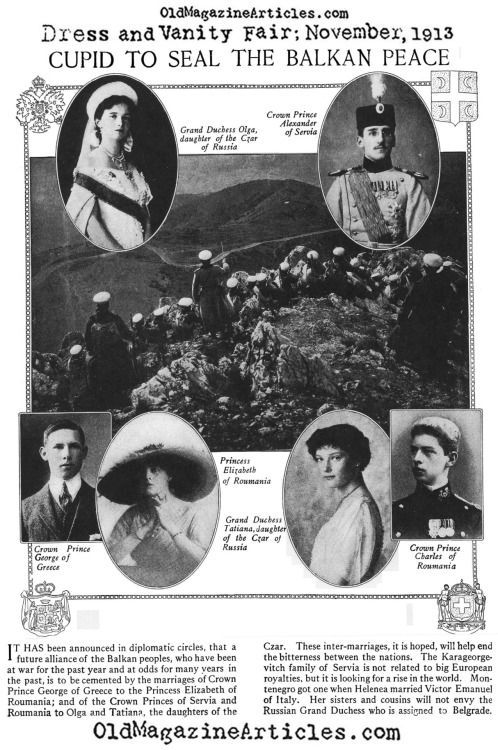
In this newspaper for November 1913, it was suggested that Olga would become the wife of Alexander of Serbia, and Tatiana – Karol of Romania. On the other hand, the English Wikipedia, with reference to Serbian archives, assures that Prime Minister Nikola Pasic wrote to Nicholas II in January 1914 about Alexander's intention to marry one of the Grand duchesses. Nikolai did not object and even noticed the interest that his daughter showed in the prince – but it was allegedly not Olga, but Tatiana. (And Russian Wikipedia generally assures: "Tatiana and Alexander wrote letters to each other until their death. When Alexander found out about Tatiana's murder, he was confused and almost committed suicide").Alexander's sister Elena, in her memoirs, which I have not yet been able to find, seemed to say that she noticed some "chemistry" between Alexander and Olga. Well, Olga's diary allows us to conclude that Alexander was not indifferent to her, and I think the Serbian heir himself paid attention to her. You can only guess what prevented you from taking the next step.In the spring, Olga is fond of Molokhovets, then the war begins, but all this does not prevent her from remembering Alexander on various occasions:"February 24.At 12 o'clock my mother received the Bavarian, Belgian, Danish and Serbian envoys (Nalajovic. So reminds Alexander C).February 25.(in small print: I haven't seen Alexander for a month since)March 25.I haven't seen Alexandra for 2 months. <...>(added, apparently, later) I haven 't seen Alexander S. for 2 months .September 4.The Pope gave Alexander of Serbia the St. George Cross 4 art . I am very happy. God help me.October 6.John, Gabriel and Kostya and Elena had lunch. They told me a lot of interesting things. She's a piece of Alexander, and I love her.October 16.At 7 o'clock we went to the infirmary with Mom, we went to everyone, and talked to K. and I. in the corridor. Everyone knows Alexander by his body."

Alexander was a thin brunette with a mustache and large facial features (and with "WOW" eyes) – this is exactly the type of appearance that has always attracted Olga. Besides, apparently, he was a really nice person. "The prince turned out to have a kind and friendly character," writes the grandson of his tutor, the famous priest Gleb Kaleda. "To please his tutor, the prince wrote to him in Russian, asking for forgiveness in advance for possible mistakes, although there were none." He was remembered as a tactful person, sometimes shy and prone to melancholy, a lover of reading – there is some similarity with Olga's character.Olga did not see Alexander again, but a year later she noted in her diary the anniversary of his arrival:"January 12, 1915.The year that I saw Alexander at Vsevolod's christening.January 15th.The year is consecrated. churches. Alexander.January 17th.Mordvinov and Count Fredericks were having breakfast. And a year ago Alexander. God bless him."It seems that even in the spring of 1916, Pasic expressed the hope that Olga would become the Serbian queen. But in January of this year, the date of the meeting with Alexander was not noted in the diary. At this time, Olga hardly thought about anyone other than Dmitry Shah-Bagov. (By the way, here her fate again intersects with the fate of Tatiana Konstantinovna, who was very friendly with the elder daughters of Nicholas II. Instead of the Serbian prince, she married a simple Caucasian officer for love, and he even served in the Erivan regiment – like Olga's lover. Because She even knew Shah Bagov and calls him a "cute, cute boy" in a letter. Surely Olga was thinking about what could repeat her path).But in 1917 Olga remembers again:"January 17th. Exactly 3 years ago today Alexander Serbsky had breakfast with us." Here the name is also written in cipher, and this is the last encrypted entry in the diary.
Olga Nikolaevna's biographers like to repeat that she wanted to stay in Russia, so she did not marry the Romanian heir Karol. The interest in Alexander the Serbian shows that, most likely, it was not in the country: it was just Karol who was unsympathetic to Olga. I think she understood that sooner or later she would have to leave her homeland. It is unlikely that the rumors had passed her by, she knew who her husbands were supposed to be, and she did not mind falling in love with a cute Orthodox prince. Maybe by the beginning of 17, she returned to thinking about him because someone had dispelled her hopes for a happy morganatic marriage? Although what could be a wedding when the revolution is already at the threshold. What kind of fate would await her in a small semi-literate kingdom, forever torn apart from the outside and from the inside?Alexander married in 1922 the sister of the same Karol (there is a version that he dragged on for so long, because until then he did not believe in the death of Olga). It seems that he became a good family man, ruled his country for more than 10 difficult years. Yugoslavia in the 20s became a fragment of the Russian Atlantis, the center of white emigration. Sometimes there is an opinion that Alexander was so supportive of Russian refugees in memory of his first love – "Olga/Tatiana." But I think Russia meant a lot to him anyway. Alexander was killed in 1934 by a terrorist, his family fled the Nazis during the war and never returned to their homeland. Well, instead of Maria, Olga could become a Romanian widow and exile… No matter how her fate turned out, it would not be easy. The time of the Slavic monarchs has passed.
Thank you for sharing!!
27 notes
·
View notes
Text






The opening was called "Mae Marsh Day." I shall not soon forget it. That night as our party entered the Coliseum through the manager's private office I espied in the center of the building a newly erected platform draped with bunting and decorated with flowers.
"You will make a little speech," the manager said.
I gasped. I think I almost fainted. I had never made a formal speech. The idea of it was as foreign to me as becoming Queen of the South Sea Islands.
-Marsh, M. (1921). Screen Acting. University of California Libraries, 2024, pp.43~44
#his mother's son 1913#d.w. griffith#heart rending story of mr. griffith#mae marsh#w. chrystie miller#책 인용
0 notes
Text

May 1913, London, England


“I am going to take a year from schooling so I can spend time with my grandmother before she dies. I have already spoken to the dean, and they will let me return with no hardship.”
Montgomery swallowed. “What of yer brothers?”
“This is my choice, darling.”
He nodded. “...I want to marry ya, Edeline.”
Edeline pursed her lips. She felt the same, knowing the moment they had first kissed that he was the only person she ever wanted to spend her life with. However, her parents had no idea about him. “We need to tell my parents first.”
“I know.” He pushed up his spectacles. “Don’t think they would like a Scottish communist for a son-in-law.”
“I don’t plan on telling them you’re a communist. My father would forbid our marriage. You being a Scottish nationalist will be enough.”

He took her hand and pulled her into his lap. “I don’t want to hide. He’ll learn eventually.”
“Well, he can learn after the wedding.”
He smirked. “We’re dancing with fate, aren’t we?”
“I suppose. Let’s be married after I graduate, yes?”
Montgomery agreed. “Do you want a civil or a church wedding?”
“My mother would have my head if I was married by a clerk. She’ll want it to be in Newcrest, the same church where I was baptized and she and my father married.”
“I can live with that.”
Edeline sat up, drawing her hand away. “I’m not going to be a housewife. I will be a doctor like you, and if we have children, we are going to raise them together. I don’t want them raised as communists either. It will be an open view of things, and if they choose your ideology, so be it. But don’t be reading The Communist Manifesto as a bedtime story.”
He chuckled. “No, I shan’t read Marx as a bedtime story. And aye, I agree with you. We will have a marriage of equals, Edeline, that I promise ya without a doubt.”
“And there is another matter, Montgomery.”
“Aye?”
“I would like to consummate our relationship tonight.”


Edeline wasn’t sure about many things in her life, but the one thing she was sure of was her relationship with Montgomery. She loved him so much that the idea of being with anyone else, fantasy or not, seemed disgusting. And yes, she was nervous about how it would feel, or what the repercussions of her parents finding out, but in that moment, they seemed far away in the back of her mind. There was only this—the movement and passions of bodies.

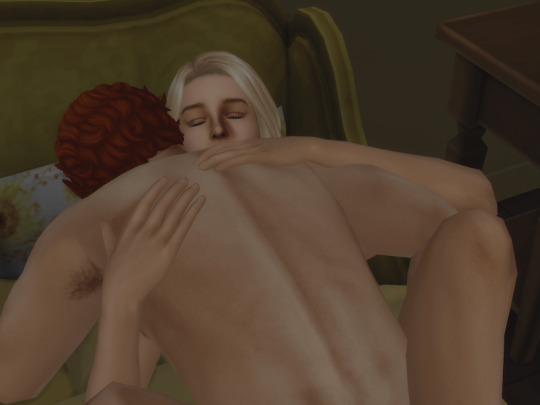


#the walshes#the walsh legacy#ts4#sims 4#sims 4 decades#sims 4 decades challenge#sims 4 historical#ts4 story#sims 4 history challenge#the sims 4#ts4 historical#ts4 simblr#ts4 legacy#ts4 1910s#1910s#tw sex mention#the last shot ahhhh i love it#edeline walsh#montgomery macgregor
11 notes
·
View notes
Text
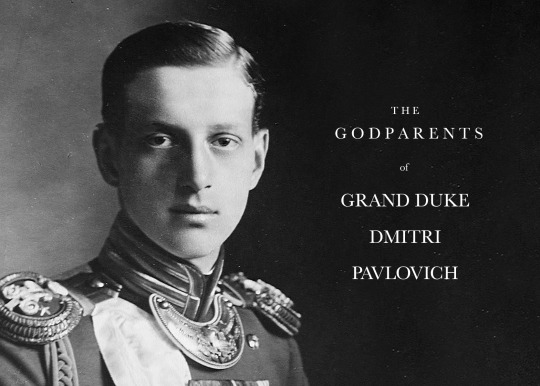


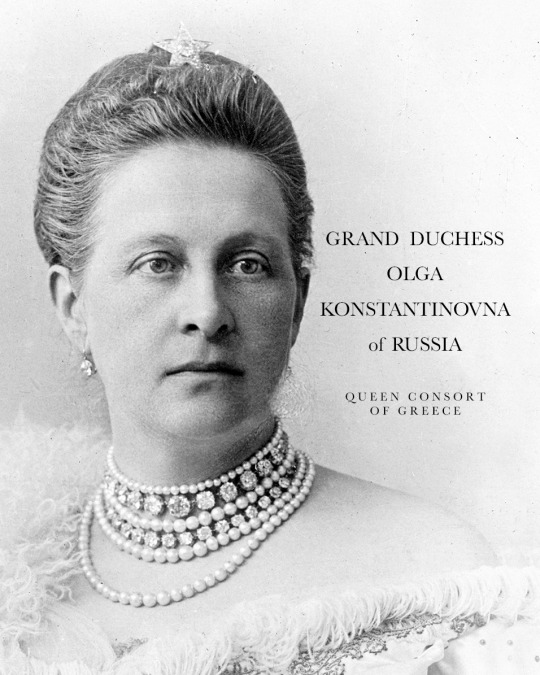


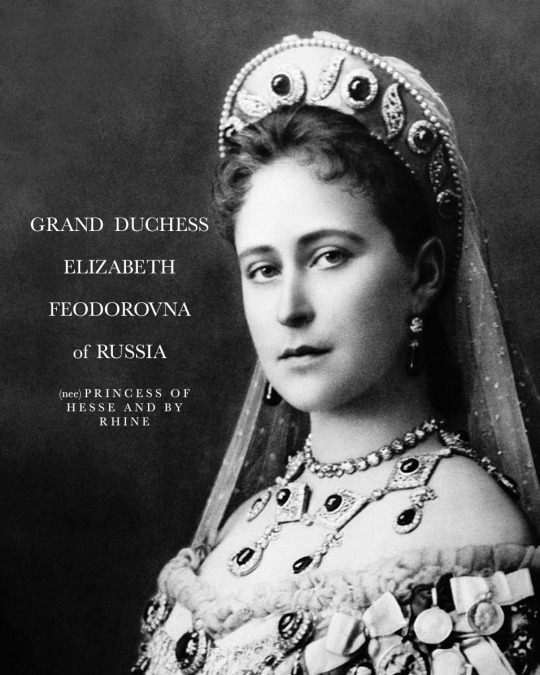


GODPARENTS OF GRAND DUKE DMITRI PAVLOVICH
Grand Duke Dmitri Pavlovich was born on 18 September 1891 at Ilyinskoe, Moscow. He was the only son of Grand Duke Paul Alexandrovich of Russia from his first marriage to his Danish-born wife Princess Alexandra of Greece and Denmark (Grand Duchess Alexandra Georgina). He was christened on 10 November in Moscow. His godparents were:
ALEXANDER III, EMPEROR OF RUSSIA - his paternal uncle was named as one of his numerous godparents. He was highly reactionary in domestic affairs and reversed some of the liberal reforms of his father, Alexander II. He was absent at his nephew's christening.
KING CHRISTIAN IX OF DENMARK - his maternal great-grandfather, the Danish King was among his many godparents. His initial unpopularity at the start of his reign, and the many years of political strife, where the king was in conflict with large parts of the population, his popularity recovered towards the end of his reign, and he eventually became a national icon due to the length of his reign. He was absent at the christening of his Russian great-grandchild.
QUEEN OLGA OF GREECE - his maternal grandmother, a Romanov by birth, was another of his godparents. In 1867, she married King George I of Greece (born a Danish prince), and had many children. As Queen, she was a popular figure and became involved in social and charitable work.
SOPHIE, CROWN PRINCESS OF GREECE - A Prussian-born princess, and a granddaughter of Queen Victoria, Sophie was named as one of Dmitri's godparents. She was his aunt-by-marriage, having married his maternal uncle Crown Prince Constantine in 1889. She later became Queen consort upon the death of King George I in 1913. As Crown Princess, and later Queen, she became involved in the assistance to the poor, following in the footsteps of her mother-in-law, Queen Olga.
GRAND DUCHESS ALEXANDRA IOSIFOVNA OF RUSSIA - his maternal great-grandmother, born a German princess, was listed as one of his godparents. Married to Grand Duke Konstantin Nikolaevich of Russia in 1848, she was considered a beautiful woman, but plagued by insecurity. Within the family, she was later known to be a formidable character.
GRAND DUCHESS ELIZABETH FEODOROVNA OF RUSSIA - his aunt-by-marriage, also a German princess and a granddaughter of Queen Victoria, was one of Dmitri's godparents. In 1884, she married his uncle Grand Duke Sergei Alexandrovich. Elizabeth had a role in Dmitri's upbringing, whom he formed a very strong bond with. She became famous in Russian society for her dignified beauty and charitable works among the poor.
GRAND DUKE MICHAEL NIKOLAEVICH OF RUSSIA - his great-uncle (paternal) and also great-great-uncle (maternal) was listed as one of his godparents. A soldier for most of his adult life, he enjoyed a favourable relationship with the three last Emperors of Russia - his brother Alexander II; nephew Alexander III; and great-nephew Nicholas II.
PRINCE GEORGE OF GREECE AND DENMARK - his maternal uncle was amongst his numerous godparents. He served as high commissioner of the Cretan State during its transition towards independence from Ottoman rule and union with Greece.
Source
11 notes
·
View notes
Text
THIS DAY IN GAY HISTORY
based on: The White Crane Institute's 'Gay Wisdom', Gay Birthdays, Gay For Today, Famous GLBT, glbt-Gay Encylopedia, Today in Gay History, Wikipedia, and more … 17 March



In a notable book on Irish gay history Terrible Queer Creatures Brian Lacey presents some evidence that Saint Patrick may have had a long term intimate relationship with a man:"St. Patrick himself may have had a relationship tinged with homoeroticism. Tirechan, a late seventh century cleric who wrote about St. Patrick, tells the story of a man Patrick visited and converted to Christianity, who had a son to whom Patrick took a strong liking. Tirechan wrote that "he gave him the name Benignus, because he took Patrick's feet between his hands and would not sleep with his father and mother, but wept unless he would be allowed to sleep with Patrick." Patrick baptized the boy and made him his close lifelong companion, so much so that Benignus succeeded Patrick as bishop of Armagh."
Going backwards in his life, I have seen elsewhere a report* that after his escape from slavery and return to Britain, he supported himself by working for a time as a prostitute - yes, good old Patrick sold sexual favours.
Does this sound far fetched? Not if you consider the historical realities of the time. Patrick's home was in Roman Britain. Throughout the Empire, prostitution was an entirely acceptable way for men or women in desperate circumstances to make a living. Consider also his likely experience as a slave. In both Roman and Greek society, as well as elsewhere, it was assumed that one of the duties of a slave, particularly if young or attractive, was to provide sexual services on demand. Ireland was not under Roman rule, but there is no reason to suppose that the conditions of slavery were notably different. (Lacy shows in his book that in pre-christian Ireland same sex relationships were accepted and respected.)
There is another reason, though why we as queer Catholics should look to Patrick as a role model, regardless of his own sexual history, a reason which goes to the heart of his mission.
In Faith Beyond Resentment, theologian James Alison observes that in the Gospel story of the healing of the man possessed by demons, Jesus instruction to the man after healing was to "Go home," that is, back to the community which had tormented and rejected him, back to his persecutors.
This is what Patrick did. Having escaped from slavery and returned to his original home, he responded to what he saw as a call to return to the country of his captivity, to go back to the land of his tormentors - and convert them.
*In a comment to an earlier posting of this piece, theologian John McNeill has said that the book with this story was How The Irish Saved Civilization, by Thomas Cahill, who claims "Patrick paid for his passage back to Ireland by servicing the sailors on the boat."



1913 – People around the world know Clay Shaw (d.1974) as the only person ever tried for the assassination of President John F. Kennedy. Most, however, do not know that he was a highly decorated war hero, a prominent New Orleans businessman, a French Quarter preservationist, a valued civic leader, and, from age sixteen, a successful playwright.
He was also a homosexual in a time and a place that viewed homosexuality as abhorrent, immoral, and criminal. In that society, gay people, particularly prominent citizens like Clay Shaw, were compelled to remain closeted and were extremely vulnerable.
When he was five he and his family moved to New Orleans. At Warren Easton High School, Shaw's one-act play "Submerged," which he wrote with a classmate, won a state playwriting contest. Seventy-five years later, it was still being produced by high school drama clubs.
When World War II began, Shaw enlisted as a private in the medical corps. Soon commissioned a 2nd Lieutenant, he was appointed to the staff of Brigadier General Charles O. Thrasher, directing supplies for the million men who crossed the English Channel in the D-Day invasion.
For his role in liberating France from the Nazi occupation, Shaw was awarded the Bronze Star and the Legion of Merit by the United States Army and the Croix de Guerre by the government of France.
Discharged from the Army in 1946, Major Shaw returned to New Orleans. Shaw was hired to launch the International Trade Mart, whose dual objectives were to sell American products abroad and to increase foreign trade into the Port of New Orleans.
At his retirement, the City of New Orleans awarded him its highest honor, the International Order of Merit, in appreciation of his many contributions to the city.
On November 22, 1963, President John F. Kennedy was assassinated in Dallas. President Lyndon B. Johnson appointed a blue-ribbon committee to investigate the assassination and to report its findings to the American people. Headed by Supreme Court Chief Justice Earl Warren, it became known as the Warren Commission. The Commission concluded that Lee Harvey Oswald was the lone assassin, but a large portion of the population felt that they had not presented the whole story.
New Orleans District Attorney Jim Garrison saw in the Kennedy assassination his opportunity for fame. He announced that the Warren Commission had deliberately lied to the American people, purposefully covering up a conspiracy. Garrison proposed variously that the conspiracy was hatched by the C. I. A., the F. B. I., the military-industrial complex, Cuban Communists, and Lyndon Johnson and Texas oil barons.
But Garrison needed a theory that allowed him jurisdiction to prosecute, so he came up with the idea that the conspiracy was planned in New Orleans, and the assassination was a "homosexual thrill killing." He told a journalist, "They had the same motive as Loeb and Leopold when they murdered Bobbie Franks in Chicago."
On March 1, 1967, Jim Garrison arrested Clay Shaw and charged him with conspiring to assassinate President Kennedy. Garrison knew Shaw was gay, but the general public did not, though soon Shaw's homosexuality was exposed. The discreetly gay Shaw was soon described as a sadist as well as a homosexual.
The trial finally began in early 1969. Garrison produced witnesses who swore that they saw Shaw plotting to kill the President. As the trial progressed, however, it became clear these witnesses were nothing more than an odd assortment of crackpots and toadies whose stories were incompatible with each other.
The jury took less than an hour of deliberation to return with a verdict of not guilty. The date was March 1, 1969, exactly two years after Shaw's arrest.
Two days later Garrison re-arrested Shaw, this time charging him with perjury. It took another two years, and the last of Shaw's retirement savings, finally to get the United States Supreme Court to order Garrison to stop persecuting Clay Shaw. By this time Shaw's resources were depleted, and he had to return to work.
The strain of the five-year ordeal took its toll on Shaw's health. He died of lung cancer on August 14, 1974. He was 61 years old.
The experience of Shaw is a telling reminder of the vulnerability of closeted gay men and lesbians in the pre-Stonewall era. Precisely because of his homosexuality, Shaw made an inviting target for the machinations of a ruthless politician.


1938 – Rudolph Nureyev, Russian-born dancer and choreographer (d.1993); Nureyev became the most famous male dancer in the West before he was 30 — and the most publicized. His influence on the world of ballet changed the perception of male dancers; in his own productions of the classics the male roles received much more choreography. Another important influence was his crossing the borders between classical ballet and modern dance by performing both. Today it is normal for dancers to receive training in both styles, but Nureyev was originator, and the practice was much criticized in his day.

Nureyev by Richard Avedon
Famously well-endowed, his sexual life was the stuff of legend - the gay playboy of the western world. But he also enjoyed several long-term relationships - he spent the early 60s involved with an older Danish dancer named Eric Bruhn (1928-1986) but their relationship had suffered from something of a 'Star Is Born' nature as Nureyev's career rocketed and Bruhn became an alcoholic. In the 1970s, he had a long relationship with Wallace Potts, a director and archivist; and in 1978 he met a young dancer named Robert Tracy, who moved into his New York apartment and stayed for fourteen years until he was evicted, complaining that he had been treated `like a lackey'.
That he partied everywhere and was photographed partying everywhere was as clever a manipulation of the press as Diaghelev's successful attempts to get the public to focus on Nijinsky's considerable crotch. "We want Rudy," the fans screamed, "especially in the nudi!" It was all part of the show. So when Dave Kopay, an athlete of a different sort, casually mentioned in his best-selling autobiography that Nureyev visited Gay bars, no one particularly cared. The Celebrity Register had already printed the peculiar warning of an English friend: "I told Rudy he can be as naughty as he likes, but if he isn't more careful, they're going to find him... some morning in an alley in Soho, his head laid open with a lorry driver's spanner."
When HIV-AIDS appeared in France in about 1982, Nureyev took little notice. For several years he simply denied that anything was wrong with his health: when, about 1990, he became undeniably ill, he is said to have attributed these to other ailments. He tried several experimental treatments but they did not stop his deteriorating health. Towards the end of his life, as dancing became more and more agonizing, he resigned himself to small non-dancing roles. At the urging of Fonteyn, he had a short but successful conducting career, which was cut short due to health problems.
Eventually, he had to face the reality that he was dying and he won the admiration of many of his detractors by his courage during this period. The loss of his looks pained him, but he continued to struggle through public appearances. At his last appearance, a 1992 production of La Bayadere at the Palais Garnier, Nureyev received an emotional standing ovation. The French Culture Minister, Jack Lang, presented him with France's highest cultural award, the Commandeur de l'Ordre des Arts et des Lettres. He died in Paris a few months later, aged 54.


1961 – Alexander Bard, born in Motala, Sweden, is a Swedish artist, music producer and philosopher.
Bard began his musical career in 1982 with the single "Life in a Goldfish Bowl" released under the name Baard, a synth-punk fusion project he had formed together with two female striptease dancers.
He has since claimed that he spent the Baard years living as a male prostitute in Amsterdam.
Bard later had some minor success as Barbie, which saw Bard in drag singing dance-oriented pop. After abandoning work on a second Barbie album, he formed Army Of Lovers with two of Barbie's entourage, Jean-Pierre Barda and La Camilla. Army Of Lovers had over 20 Pan-European hits, the biggest being "Crucified", "Obsession" and "Sexual Revolution", while their presence in the US and the UK was limited to repeated club chart successes. They released five studio albums, made over 20 high-camp music videos, and became phenomenally successful across Eastern Europe, before Bard disbanded the group in 1996.
Army Of Lovers have later earned a widespread iconic status in the gay culture, often referred to as a perfect example of the postmodern take on the ideals of camp.
Bard is a self-proclaimed bisexual libertine

youtube
1968 – Two drag queens known as "The Princess" and "The Duchess" held a St. Patrick's Day party at Griffith Park, a popular cruising spot and a frequent target of police activity in Los Angeles. More than 200 gay men socialized through the day to protest entrapmentand harassment by the LAPD.


1969 – Alexander McQueen, British fashion designer, born (d.2010). Born in the East End of London, the son of a taxi driver, McQueen started making dresses for his three sisters at a young age and announced his intention of becoming a fashion designer. McQueen left school at 16, landing himself an apprenticeship with Savile Row tailors Anderson and Shepherd, then working for Gieves & Hawkes and the famous theatrical costumiers Angels and Bermans.
Alexander McQueen's early runway collections developed his reputation for controversy and shock tactics (earning the title "enfant terrible" and "the hooligan of English fashion"), with trousers aptly named "bumsters", and a collection entitled "Highland Rape". It has also been claimed that he was on welfare and that he needed to change his name for his first show so that he could continue to receive benefits.
Some of Alexander McQueen's accomplishments include having been one of the youngest designers to achieve the title "British Designer of the Year", which he won three times between 1996 and 2003. He was also awarded the CBE, as well as being named International Designer of the Year at the Council of Fashion Designer Awards.
December 2000 saw a new partnership for McQueen with Gucci Group acquiring 51% of the company, and McQueen serving as Creative Director. Plans for expansion have included the opening of stores in London, Milan, and New York, and the launch of his perfumes Kingdom. January 2006 heralded the birth of McQ - Alexander McQueen - a denim based ready-to-wear line (womenswear, menswear and accessories).
In summer 2000 McQueen married his twenty-four-year-old lover George Forsyth, a documentary filmmaker. The ceremony, which took place in Ibiza on a yacht owned by a friend of supermodel Kate Moss (who was also bridesmaid), was covered by the press in much the same way as any other celebrity wedding. The relationship however did not last.
Alexander McQueen was found dead at his London home on 11 February 2010. McQueen hanged himself after taking a mix of cocaine, tranquillisers and sleeping pills. He was just 40 and days away from presenting a new collection in Paris.


1970 – Steven Fales is a classically trained playwright and actor who has gained broad recognition in both the theatre world gay community and the LDS community for his award-winning one-man play, Confessions of a Mormon Boy.
The first reading of Confessions was at the Sunstone Symposium in Salt Lake City in 2001. He has performed the play off-Broadway (under director Jack Hofsiss) and across the United States and internationally at the Edinburgh Festival Fringe and London's West End. He uses his experiences to help others to reclaim spirituality and his work is his contribution to helping end spiritual abuse and violence in churches, mosques and synagogues. The book 'Confessions of a Mormon Boy: Behind the Scenes of the Off-Broadway Hit' was a Lambda Literary Award Finalist. Before becoming a solo artist he performed in Shakespeare and musicals in regional theatres across America.
'Confessions of a Mormon Boy' is Part One in 'The Mormon Boy Trilogy.' Part Two and Three are called 'Missionary Position' and 'Prodigal Dad.' Mormon-American Princess is his cabaret act and deals with the subject of narcissism. It premiered in San Francisco and has played Joe's Pub, New York City. Other solo shows include 'Conversations with Heavenly Mother: An Uncommon Diva', 'Joseph III', 'CULT!', and 'When All Else Fales.' He is a leader in the solo performance genre and is the founder of the Solo Performance Alliance.
Fales was born in Provo, Utah and raised in California and later Las Vegas, Nevada. He first trained at the Boston Conservatory on scholarship and after serving a two-year mission for the LDS Church in Portugal transferred to Brigham Young University where he received his BFA in musical theatre.
"Mormon Boy" chronicles Fales' heartbreaking journey from being a devoted, sixth-generation Mormon and father of two to coming out as gay and being excommunicated from his church.
He lives in Salt Lake City with his two children where he exports his work from the Rocky Mountains to Los Angeles, New York, and London. He is the former son-in-law of celebrated Mormon writer Carol Lynn Pearson and former husband of actor/writer/producer Emily Pearson.
Below he performs his song "Mormon Boy":
youtube


1970 – On this date the film-adaptation of Mart Crowley 's groundbreaking gay play, The Boys In The Band, premiered in New York City. 40 years later, a new documentary, Making The Boys about the making of this play and Mart Crowley's career opened in NYC.

"Making The Boys" is a new documentary about the history surrounding the groundbreaking play:The Boys in the Band. On the eve of the 40th anniversary of the Gay Rights Movement, the film explores the drama, struggle and enduring legacy of the first-ever gay play and subsequent Hollywood movie to successfully reach a mainstream audience.
Written by Mart Crowley, The Boys in the Band ran for over 1,000 performances off-Broadway and was later made into a feature film. It was one of the first pieces of popular entertainment that centered on a group of gay characters. Set in a New York apartment, The Boys in the Band is about a group of gay men getting together for a birthday party. The dialogue is biting and acerbic, and doesn't shy away from presenting characters that fall into stereotypes.
The most interesting thing about "Making The Boys" is that it isn't afraid to confront the controversy that has surrounded the play since its first performance in 1968. One of the subjects interviewed is the playwright Edward Albee, and he doesn't have that many positive things at all to say about the show. As the gay right movement built momentum during the 1970s, many began to resent negative portrayal of gays in the play and subsequent movie. Beloved by some for breaking new ground, and condemned by others for reinforcing gay stereotypes, The Boys in the Band sparked heated controversy that still exists four decades later


1972 – On this date John Waters' Pink Flamingoes was released. A star is born...Divine!


Gately (R) with Andrew Cowles
1976 – Stephen Gately (d.2009) first found fame as second lead vocalist with Irish vocal group Boyzone, who in the late 1990s were the most successful boyband in the UK, bridging the gap between Take That & Westlife.
Enjoying a string of number 1 singles and albums and successful tours, they were at the height of their fame when, in 1999, Stephen discovered that a national newspaper was planning to out him. He made the decision to tell his own story first and went public in The Sun newspaper - a brave choice in the, even now, surprisingly closeted world of pop music. Already out to friends, family and the other members of Boyzone, the fans attitude to their idol remained unchanged.
Stephen Gately had a short and relatively successful career as a solo artist, but being solo after Boyzone left him depressed and missing his bandmates. He eventually moved more succesfully into musical theatre, his roles including Joseph in Joseph & the Amazing Technicolour Dreamcoat and the child-catcher in Chitty Chitty Bang Bang in London's West End.
At the time of his tabloid coming out Stephen Gately revealed that in 1998 he had started a relationship with Eloy de Jong, who had been in the Dutch boy band Caught in the Act. Stephen and Eloy split up in 2001, however.
After remaining single for a while, Stephen then started dating internet businessman Andrew Cowles, who had been introduced to him by Elton John and David Furnish.
Having only been dating each other for a matter of months, Stephen and Andrew held a commitment ceremony in a wedding chapel whilst on holiday in Las Vegas in 2003. On 19 March 2006 Stephen entered into a civil partnership with Andrew in a ceremony in London.
In 2007 after months of stories and rumours it was finally confirmed that Boyzone were to reform with the original lineup, making their debut reappearance for the BBC's Children In Need in November 2007. In 2008 the reformed Boyzone released a cover version of Tom Baxter's song Better, the video for which broke new ground by showing Gately with another man rather than the female models his straight bandmates apeared with, becoming probably the first mainstream pop video by a boyband to reflect the true sexuality of its members.
In October 2009 Stephen Gately was in Mallorca with husband Andrew, where they owned a holiday apartment. After going out for drinks on Saturday, 10 October the pair returned to their apartment with a man they had met in a club. Eventually Gately was left to sleep in the living room and was discovered in the early hours of the morning by their guest not moving and seated strangely; he immediately alerted Andrew Cowles that something was wrong. Stephen Gately was dead. His completely unexpected death at the age of 33 - and as his career with Boyzone was flourishing once again - came as a huge shock as the news quickly emerged.
A post mortem examination in Spain established that Gately died of natural causes.



19 notes
·
View notes
Note
Which prospect do you think Has a higher chance with alexei ? Princess Ileana of Romania or Princess Elizabeth of Greece and Denmark?
Hi! Thanks for the question and I'm so sorry for the very late reply!
This is a difficult one to answer as it's all guesswork.
In terms of wider family relations, it appears that no one really liked Carol (I don't blame them!!) when they visited in 1913, and Queen Marie of Romania wasn't particularly enthusiastic about Alix in her memoirs. She also explicitly said that she did NOT want to have someone with haemophilia in her family due to the suffering it brings. She mentioned being concerned about Carol marrying one of OTMA because of the possibility they could be a carrier of the haemophilia gene. I don’t know if she knew that Alexei had haemophilia when she knew the Romanov family, but I think she might have avoided the match if she was aware. Although any of Alexei's children wouldn't have had haemophilia (only passes through the female line), the chance of him passing from a fatal attack at any moment certainly wouldn't be ideal for a marriage match.


Elizabeth and Alexei were very close in age, and there are some very sweet anecdotes about them meeting when they were children. Elizabeth's mother was Russian, which might have made the match more favourable. Also, they seemed to know each other far better than Alexei did Ileana, as Elizabeth and her family visited Russia pretty much yearly. Because of Marie of Romania's fears about haemophilia, and her dislike (and pitying) of Alix, I think that the match with Elizabeth would have been more favourable.
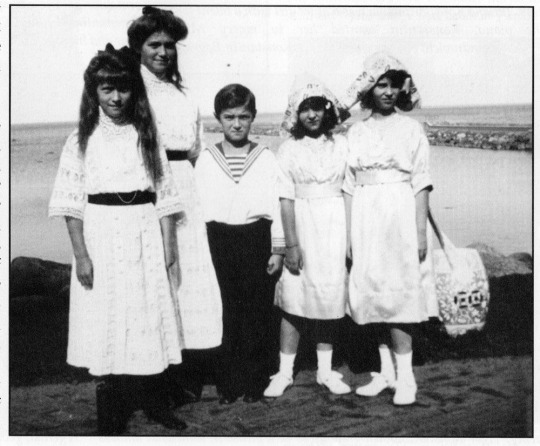
Which also brings up the fact that many boys that suffered from haemophilia sadly didn't live long into adulthood. Alix's brother Frittie passed away after an accident where he fell out of a window, and Henry of Prussia (Alix's nephew) passed away after falling off a chair. Tragically, most children died before they reached their teenage years. Some people with haemophilia lived considerably longer, though. Prince Waldemar of Prussia (a cousin) lived to age 59, until he passed away due to a lack of medical supplies for a blood transfusion. Alfonso of Spain died when he was 31 after a minor car crash caused internal bleeding, and his brother Gonzalo also passed away after a minor car accident, aged only 19. Most famously, Prince Leopold, son of Queen Victoria, died from a fall that resulted in cerebral haemorrhage.
We will never know for certain, I'm afraid, but those are my thoughts! What does anyone else think?
#q#ask#answered#anon#Alexei Nikolaevich#Marie of Romania#Ileana of Romania#Elizabeth of Greece#cousins
20 notes
·
View notes
Text
Father Leo Houlihan

Name: Father Leo William Houlihan
Occupation: Catholic Priest
Age: 144
Sexuality: Between him and God (queer, he’s queer)
Species: Vampire
Clan/Pack/Coven?: Leo prefers to remain unaffiliated to anything but the Church.
Hometown: Brooklyn, New York
Relationship Status: Married to God
Personality Traits:
Leo is everything that you would want a Priest to be, ideally. He’s devoutly religious and faithful, spending a lot of time pursuing philosophy and theology. As well as this, he is gentle, kind and generous. He devotes his time to helping his community, particularly the impoverished and newly turned vampires. It has been hard-work for him to cultivate the kind of personality and presence that he feels that God would prefer, and despite his role as a peace-maker in the local community, he often feels like he is failing. Leo can have terrible decision paralysis when he needs to take a course of action quickly, or when he needs to pick a side in a dispute. He’s easily manipulated and always willing to give people another chance, even when they have categorically proven that they do not deserve it. Beneath everything, he is tempted, deeply tempted, by the call of blood and the body.
Biography:
child death from illness tw
Leo was born in Brooklyn in 1880, the fourth son and seventh child of a large family of Irish immigrants. The Houlihans were incredibly devout Catholics, particularly Leo’s mother, Mary, and Leo himself was named after the then Pope. Despite what little money they had to spend on his education, Leo was academically very gifted, although chronically shy as a child, and much too attached to his mother for most people’s liking. Tragedy visited the family on more than one occasion, with the death of Leo’s youngest sister, Margaret, from diphtheria when he was seven and she was three, and late the death of his father in an accident at the docks where he worked.
It was decided quite early on that the best place for a child of his nature was within the Church, and Leo was raised knowing that once he turned eighteen, he was going to enter the priesthood, which was exactly what happened. Leo thrived, able to dodge the ordeal of having to find a wife and build a family, which he had never liked the idea of, and to practice a much more gentle masculinity than was typically expected of men in his community. He thrived in the Priesthood, as both a theologian and as a pillar of the local community.
It was in 1913, when he was thirty-three, when things went awry. Having opened the doors of his Church to the homeless overnight during a particularly nasty winter storm, Leo allowed a group of strangers whom he had never seen before into his presence. This proved to be a terrible mistake, as they had bloodthirsty motives, and a group of four vampires quickly tore through the people sheltered there. Leo himself expected to be killed, but as he lay dying, the leader of the group offered him a twisted form of communion, which in a moment of weakness and fear, he accepted.
Leo fled, and for a year lived as a monster in the darkness, loathing himself and the demonic creature he’d become, feeding off rats and pigeons in the gutters. Without the guidance of God, he lived a wretched existence, hoping that someone would come and end it. Eventually, purposeless, he returned to the Church, to his calling. It turned out, he was not the only priest with a dark secret. Within the Church was a small network of the supernaturally endowed, operating in secret, serving the spiritual needs of the supernatural community. They even, technically, had the blessing of the Papal seat (Pope Innocent VI in 1358, but it still counted).
It was a double-edged sword. Despite the joy at having found a renewed purpose, it was difficult to see his family, his former, human community, age and wither and eventually die. Leo moved from city to city to avoid suspicion, only taking services after sunset, in tandem with human Priests who served during the day, and believed he suffered from a medical sensitivity to sunlight. He never spent more than a decade in a single location, avoiding questions about how he stayed so youthful. As the times changed, so did he, his values and opinions. He came to understand his fellow vampires better, that they were not monsters, but lost souls in need of the guidance of God’s grace.
Had he remained human, Leo could have expected to climb reasonably high in the authority of the church, between his education and dedication. Alas, the heights that he could reach within the supernatural branch were much more limited. Leo came to Port Leiry three years ago, to be stationed at the Temple of Divine Will, the only church in the country designed to cater primarily to the supernatural. He was replacing the previous incumbent supernatural, who had been sadly killed in an altercation with hunters. This was a great honour, and showed how respected Leo had become by his peers. He has lived in Port Leiry ever since, making himself available for both the old and new, and as a meditative voice in disputes between factions.
Wanted Plots:
Leo is always available to assist and guide baby supernaturals, especially the impoverished.
Fellow religious types with whom he can talk philosophy and theology.
Demons of temptation, trying to lure him from the path of righteousness (with blood, with pleasures of the flesh, with righteous anger).
Troubled souls, for whom he can be an angel on the shoulder.
Old friends, who’ve known him for decades.
Members of the group of vampires that massacred his charges and turned him.
Those that hate what he is, whether that’s as a priest or as a vampire.
2 notes
·
View notes